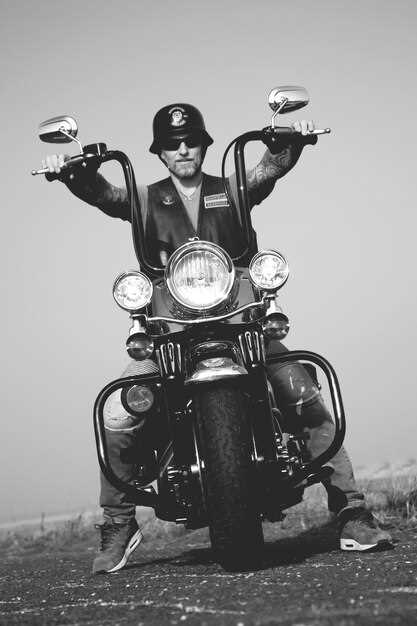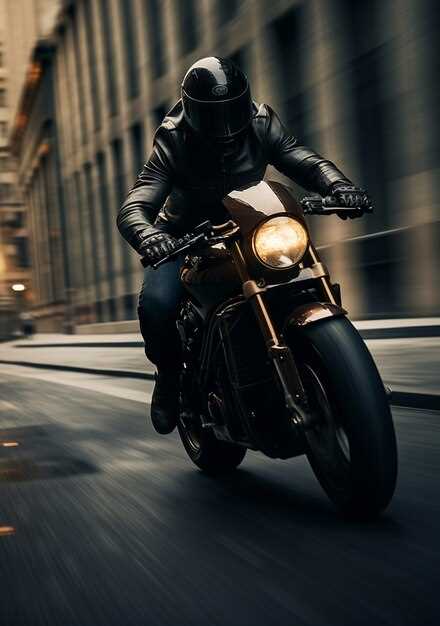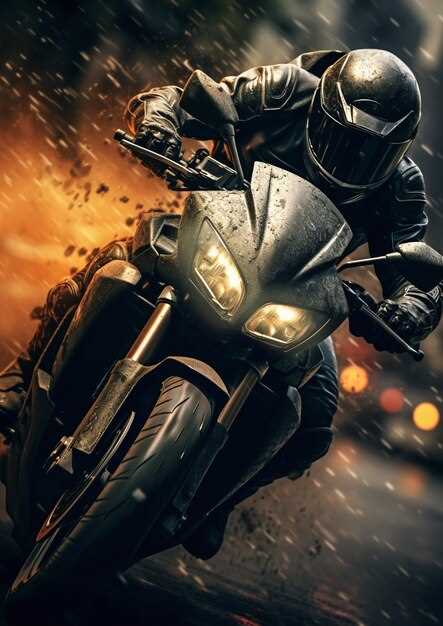
In the realm of motorcycle photography, capturing the essence of speed, freedom, and adventure is crucial. However, the magic doesn’t end with the click of the shutter. Effective editing transforms raw images into stunning visuals that convey the emotion and thrill of riding. By enhancing colors, adjusting contrast, and refining details, photographers can create powerful images that resonate with their audience.
The journey to mastering motorcycle photo editing techniques begins with understanding the tools and software available. Whether you’re a beginner or an experienced editor, knowing how to manipulate images is essential to elevate your work. Familiarize yourself with features that allow for precise adjustments, enabling you to highlight the bike’s features and the surrounding environment, while maintaining the natural feel of the scene.
Moreover, it’s important to establish a workflow that suits your style and enhances productivity. By combining creativity with technical skills, you can develop a signature look that sets your motorcycle photography apart. The right editing techniques can turn an average shot into an unforgettable image, capturing the spirit of the ride and leaving a lasting impression on viewers.
Enhancing Colors and Contrast in Motorcycle Photos
Enhancing colors and contrast in motorcycle photos can dramatically improve their visual appeal, making the images more striking and vibrant. Start by adjusting the basic elements such as brightness and contrast. Increasing the contrast helps to define the shapes and lines of the motorcycle, giving it a more pronounced presence in the image. This can be achieved using software tools that allow for precise adjustments.
Next, focus on color saturation. Raising the saturation can make the motorcycle’s colors pop, adding life to the photo. However, be cautious not to over-saturate, as this can lead to unnatural colors. Instead, find a balance that maintains realism while enhancing the excitement of the motorcycle’s design and surroundings.
Another technique to consider is selective color enhancement. This involves isolating specific colors within the image–such as the motorcycle’s paint or the background elements–and adjusting them individually. This method allows for a more tailored approach, emphasizing features that make the motorcycle unique.
Utilizing curves can also enhance images effectively. By manipulating the RGB curve, you can create deeper shadows and brighter highlights, which adds depth and dimension to the motorcycle. This technique helps create a more dynamic range of tones that can elevate the overall quality of the photo.
Finally, don’t forget about the role of lighting when enhancing your motorcycle photos. If the original image was taken in less-than-ideal lighting conditions, applying adjustments to shadows and highlights can help restore detail that may have been lost. Experimenting with light sources will allow for an artistic interpretation that can highlight the sleek lines and features of the motorcycle.
Utilizing Composition Techniques for Striking Motorcycle Images

Effective composition is crucial in creating captivating motorcycle images that resonate with viewers. One of the foundational techniques is the rule of thirds. By dividing the frame into a grid of nine equal parts, positioning the motorcycle along these lines or at their intersections enhances visual interest. This technique helps to draw the viewer’s eye towards the subject while allowing background elements to contribute to the overall atmosphere.
Leading lines are another powerful compositional tool. Roads, fences, and natural pathways can guide the viewer’s gaze toward the motorcycle, adding depth and dynamism to the image. When editing, ensure these lines are accentuated to enhance the sense of motion and adventure that motorcycles embody.
Framing the motorcycle within its environment can create context and tell a story. Incorporating elements like trees or architecture can act as natural frames, emphasizing the bike while providing an engaging backdrop. During the editing process, adjusting contrast and saturation can help bring these elements into sharper focus, allowing for a more cohesive image.
Symmetry and patterns can also result in striking images. Capturing the motorcycle head-on or from symmetrical angles can create a sense of balance and harmony. When editing, maintaining or enhancing these qualities can further highlight the motorcycle’s aesthetics, making it the focal point of the composition.
Lastly, consider perspective. Shooting from a low angle can give the motorcycle an imposing presence, while a higher vantage point can showcase its surroundings. Experimenting with different viewpoints can add variety to your collection. In the editing phase, cropping and straightening may enhance the impact, ensuring the composition draws attention where it’s intended.
Applying Filters and Presets for Motorcycle Photography Styles

Applying filters and presets is an essential technique in enhancing motorcycle photography, allowing photographers to create distinct styles that elevate their images. Filters can dramatically alter the mood and tone of a photo, while presets offer a quick and efficient way to achieve a consistent look across multiple images.
When working with motorcycle photography, consider using filters that emphasize the bike’s sleek design and surroundings. For example, a high-contrast black and white filter can evoke a sense of nostalgia, highlighting the chrome details and contours of the motorcycle. Alternatively, a warm filter can enhance golden hour shots, creating a vibrant and inviting atmosphere that complements the spirit of freedom associated with biking.
Presets, on the other hand, can streamline the editing process. Many editing software programs offer customizable presets tailored for different scenarios, such as action shots or parked bikes. These presets can adjust exposure, saturation, and sharpness automatically, providing a professional finish with minimal effort. However, it is crucial to fine-tune these presets to fit individual images, as each photo has unique lighting and composition that may require specific adjustments.
Combining filters and presets can lead to innovative results. For dynamic action shots, applying a motion blur filter along with a vibrant preset can capture the essence of speed and excitement. Experimenting with different combinations will help you develop a signature style that resonates with your audience.
Finally, consider the narrative you wish to convey through your motorcycle images. Different filters and presets can evoke specific emotions and responses. For instance, a gritty, desaturated look might appeal to those drawn to the raw and rebellious nature of motorcycle culture, while a polished, glossy finish could attract a more upscale clientele interested in luxury bikes.
In summary, mastering the application of filters and presets is crucial for creating impactful motorcycle photography. By understanding how these tools can manipulate visual elements, photographers can enhance their work’s emotional resonance and aesthetic appeal.





